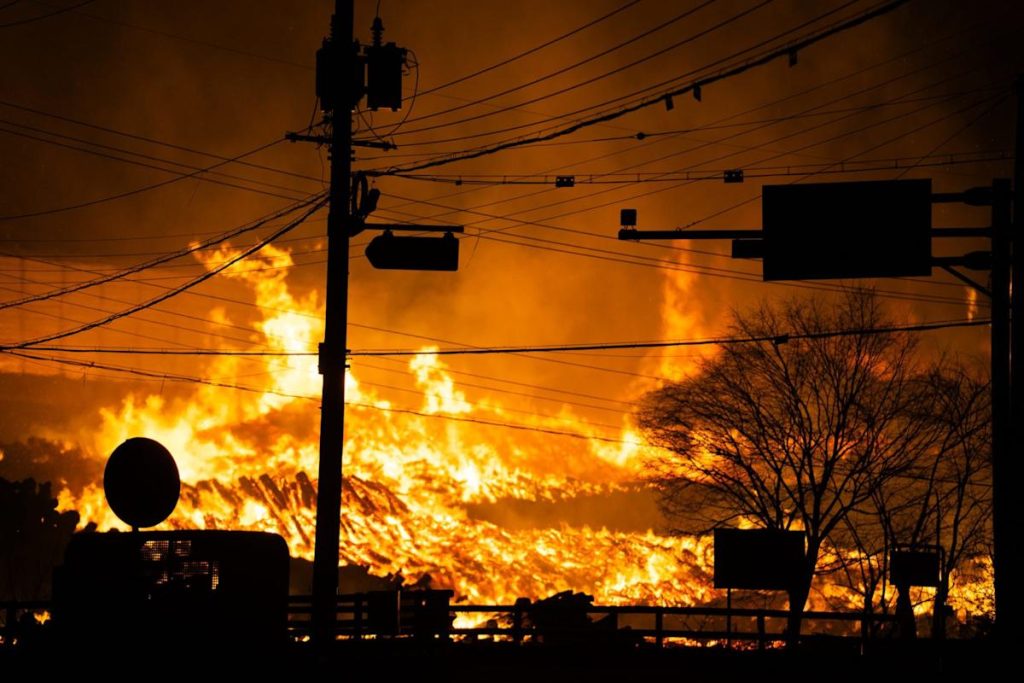Hello and welcome to Eye on AI. In today’s edition…How a new prediction model could improve wildfire management and response; Trump tariffs are “worse than the worst case scenario” for tech investors; AI executive shakeups hit Google and Meta; and AI therapy chatbots might actually work.
Record-setting wildfires have become the norm over the last few years, with climate change playing a pivotal role in increasing both the frequency and intensity of fires. Today’s forest fires burn nearly six million more hectares of trees compared to two decades ago, and the issue is only expected to worsen with forested regions in the northern hemisphere warming at faster rates compared to the rest of the planet, according to data from The World Resources Institute.
So, unsurprisingly, scientists are seeing how they can leverage AI models to better understand and control the crisis. This week, researchers from the European Centre for Medium-Range Weather Forecasts (ECMWF) unveiled a new machine learning model called Probability of Fire (PoF) that outperforms traditional models designed to predict wildfire events. While machine learning algorithms make it possible, the researchers tell me the key to this model’s success is all about the data—yet another piece of evidence that access to high-quality datasets is critical if AI is to contribute to breakthrough scientific research.
The model
Previous predictive models considered combinations of heat and dryness to determine fire danger ratings. This method, however, failed to take into account some of the most important factors that influence wildfires, such as the amount of vegetation that could serve as fuel. This resulted in many false positives for fire danger, for example, flagging risk in vast desert areas that don’t actually experience fires because they lack the vegetation needed for a fire to start and spread.
The new model from ECMWF integrates more information, tapping datasets on other factors including observed fire activity, satellite data on the amount of vegetation that could act as fuel, possible ignition causes (like lightning forecasts), population, and road density. It also considers where fires have happened in the past, not just where there’s hot temperatures and dryness.
“PoF represents a shift away from traditional models that focus on fire danger,” said ECMWF researchers Francesca Di Giuseppe and Joe McNorton, who authored the paper published in Nature Communications. “By focusing on satellite observed fire activity rather than just potential conditions, we more accurately predict where fires are likely to occur.”
Data > everything else
Aside from just developing a more effective model, the researchers sought to understand the importance of model complexity versus the importance of the data. So they created three models, each with increasing complexity, and gave them varied combinations of data. The mid-complexity model performed the best, and overall, the results showed serious degradation in prediction quality whenever one or more datasets was omitted.
“The improvement achieved by incorporating additional data into the training process outweighs the gains obtained from transitioning from a medium-complexity to a high-complexity architecture,” reads the paper.
To improve fire prediction even further, Di Giuseppe and McNorton said they’d want to be able to incorporate high-resolution, real-time satellite data on vegetation composition and moisture. Additionally, more novel data on human practices like agricultural burning would also enhance the model’s ability to predict fires and their spread, improving overall risk forecasting. Lastly, they said improved weather forecasting models—such as those recently created by Google DeepMind, as well as ECMWF’s own system—have the potential to further boost fire prediction.
Aiding the fight
Having a better handle on the risk of wildfires can help us to prevent them, with targeted strategies like public warnings and access restrictions to certain areas. The better modeling can also help with emergency response once a wildfire has started. In the long term, systems like PoF could also improve land management strategies and ecosystem health by aiding policy and conservation efforts in fire-prone areas.
Fire risk is regional, with small agencies needing to understand the current conditions and risks in their area. That’s one reason the most complex model isn’t always best.
“One of the key strengths of our model is that it has been designed to be both cost-effective and user-friendly. We wanted to make sure that it could be easily accessed and used by practitioners and centers that may not have large resources at their disposal,” Di Giuseppe and McNorton said. “By keeping the model simple to implement and affordable, we hope it can be widely adopted, enabling better wildfire risk management in areas where resources are limited.”
Now, just one more thing before we get to the rest of the news. Today’s newsletter will sadly be my last. It’s been nothing but a joy breaking down the most important stories unfolding in and around AI for you every week. Eye on AI will still be in your inboxes every Tuesday and Thursday, written by Jeremy Kahn, Sharon Goldman, and the Fortune Tech team. Thanks so much for reading!
Sage Lazzaro
sage.lazzaro@consultant.fortune.com
sagelazzaro.com
This story was originally featured on Fortune.com

